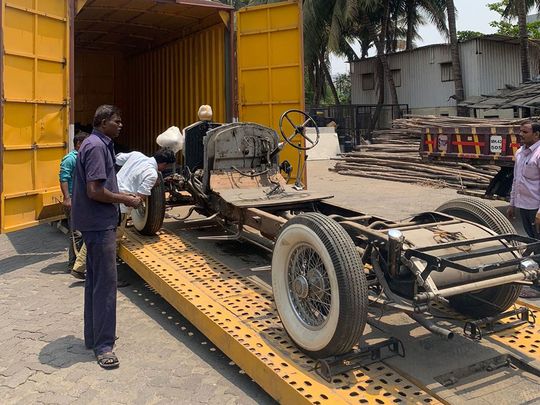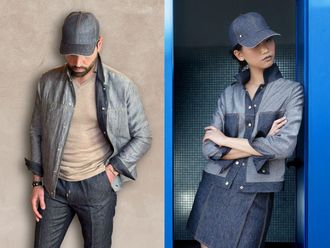
Pratap Sinh Gaekwad has always loved cars. Since he was a little child visiting his family’s vast palace in Baroda, Gujarat (the largest private residence in the world), he would spend time at the ‘Buggy Khana’ or ‘carriage rooms’ of the grounds of the estate, where cars, jeeps and royal carriages were stored. So when Pratap recently launched a YouTube channel and Instagram handle focused on his passion, traveling across India to interview owners of vintage and modern classic cars, it seemed but a natural off-shoot for a 21st-century prince.
There he is, in Jodhpur, looking dapper, his grey hair shining in the sun, discovering the beauty of the French-made 1938 Delahaye 135 MS, showcasing the artistry of Joseph Figoni and Ovidio Falaschi, celebrated coach-builders of their time. The car belongs to Rajkumar Veer Vikram Singh of Jodhpur a descendent of the Jodhpur royal family. “In the late 1930s, this car represented the pinnacle of luxury and innovation, featuring a powerful inline-six engine,” Pratap notes in an Instagram post. He tells The Kurator that only 5 such cars remain in the world, and just this one in India.
“It’s about finding those rare gems,” explains Pratap, about the idea of setting up Buggy Khana “I wanted to be a conduit, to put the spotlight on people who are passionate, those who are restoring our automotive heritage. Hearing stories of the car owners and understanding what it takes to look after these jewels in our country,” he says. Before World War II, Indian royals were amongst the biggest importers of luxury European cars, and after the war, they also turned their attention to American-made motors.
After India became independent in 1947, royal families were guaranteed privy purses and certain rights to encourage them to merge their kingdoms into the new country. Almost all did so. But privy purses were abolished in 1971, at which point many former royals were forced to sell assets—including luxury cars—to maintain their palaces and staff. The Gaekwads were no exception. They sold a beloved Rolls Royce 2025, originally purchased by Pratap’s great-great grandfather, the -visionary Maharaja Sayajirao Gaekwad in 1934. Jacques Kellner, the most noted French coachbuilder of that era, had designed the Rolls’ luxurious cherry red interiors; he had displayed the car at that year’s Salon de l’Automobile show in Paris. Two years ago, Pratap managed to buy it back. He is now painstakingly having it restored in Bengaluru, working closely with a car historian, painting it back to its original dark blue exterior, fixing every small screw and part. “I am so happy to bring her back to where she belongs,” he quips.
It was during the pandemic that Pratap really began to focus on building his own car collection. He now owns 20 or so cars, including a 1971 Ford Mustang Mach 1 and a 1966 Mercedes 230 SL convertible. He has been invited to showcase the latter at the Oberoi car concourse in Udaipur in February 2024, which will feature various Rolls Royce and European cars made in the 1960s. “In India, the car is a very sacred asset,” points out Pratap. “When we buy a new one, we garland it, we go pray in a temple to ensure its glory. Through Buggy Khana, I hope to show this attachment and respect for our cars.”






